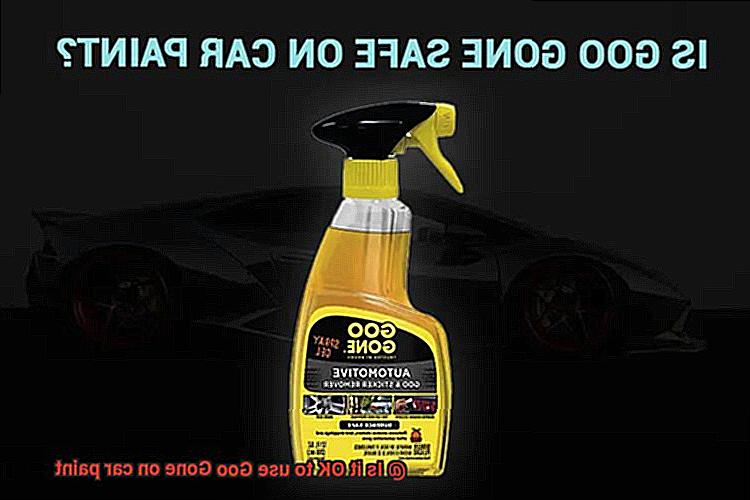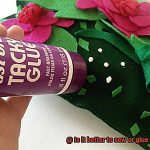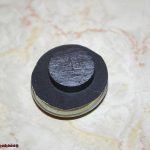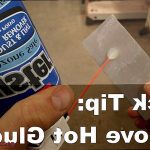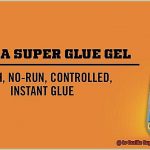Imagine this: you’re cruising down a picturesque road, the breeze gently brushing against your skin, when suddenly your eyes catch sight of an ugly, sticky mess tarnishing your car’s flawless paint job. Panic sets in. How can you remove this unwanted eyesore without causing harm to your beloved ride?
Enter Goo Gone – the superhero of goo removers that claims to vanquish sticky substances from any surface. But here’s the burning question: is it safe to use Goo Gone on your car’s delicate paintwork?
In this blog post, we’ll delve into the nitty-gritty of using Goo Gone on car paint. We’ll uncover the do’s and don’ts, unraveling whether this magical elixir is a blessing or a curse for your precious wheels.
While Goo Gone may work wonders on glass, plastic, and other materials, its effect on car paint raises concerns. We’ll explore the potential risks involved and discuss how to minimize them, ensuring that your car’s exterior remains pristine.
Buckle up, fellow car enthusiasts. We’re about to navigate through the twists and turns of Goo Gone and its impact on car paint. Along our journey, we’ll highlight key points to consider before unleashing this powerful solution on your vehicle.
So, before you grab that bottle of Goo Gone, let’s dive into the world of car paint protection and discover if it truly creates a match made in heaven or a recipe for disaster.
Considerations for Using Goo Gone on Car Paint
Contents
- 1 Considerations for Using Goo Gone on Car Paint
- 2 The Chemical Composition of Goo Gone
- 3 Application Method and Potential Damage to Car Paint
- 4 Different Types of Car Paints and Their Reactions to Goo Gone
- 5 Alternatives to Using Goo Gone on Car Paint
- 6 Professional Advice for Removing Adhesive Residue from Car Paint
- 7 Conclusion
Goo Gone is a popular adhesive remover that works wonders on sticky residue. However, when it comes to car paint, caution must be exercised. Car paint is delicate and requires special care to avoid damage. In this article, we will explore the considerations for using Goo Gone on car paint and provide alternative solutions for safely removing sticky residue.
Chemical Composition and Potential Damage:
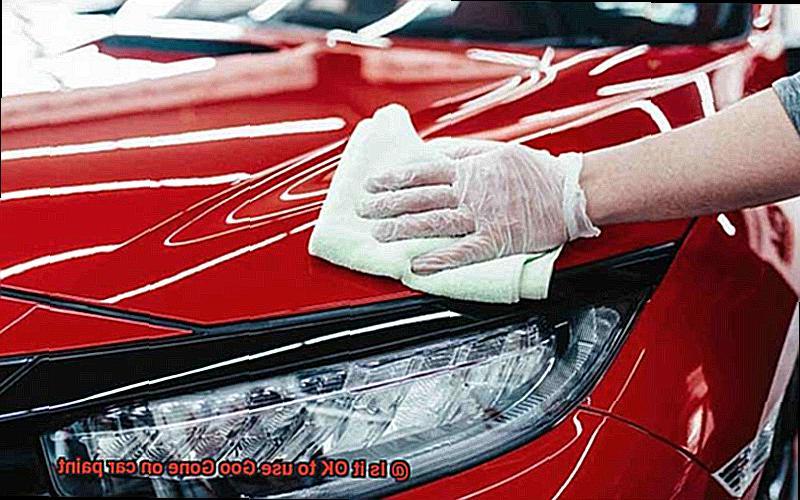
Goo Gone’s powerful solvents are designed to break down adhesives and sticky substances. Unfortunately, these solvents can be too harsh for car paint, potentially causing fading, discoloration, or even peeling. The clear coat that protects the paint may also be compromised by the solvents, jeopardizing its integrity.
Application Method:
To remove adhesive residue with Goo Gone, one typically sprays or pours it onto the surface and then wipes away the residue. However, this rubbing motion can inadvertently create micro-abrasions on the car paint. These abrasions can lead to a duller finish or permanent damage if a cloth that isn’t soft enough or if dirt particles are present.
Different Paint Reactions:
Car paints vary in their resistance to Goo Gone. While some paints may withstand its use without visible damage, others may be more prone to negative effects. This unpredictability emphasizes the risk involved in using Goo Gone on car paint.
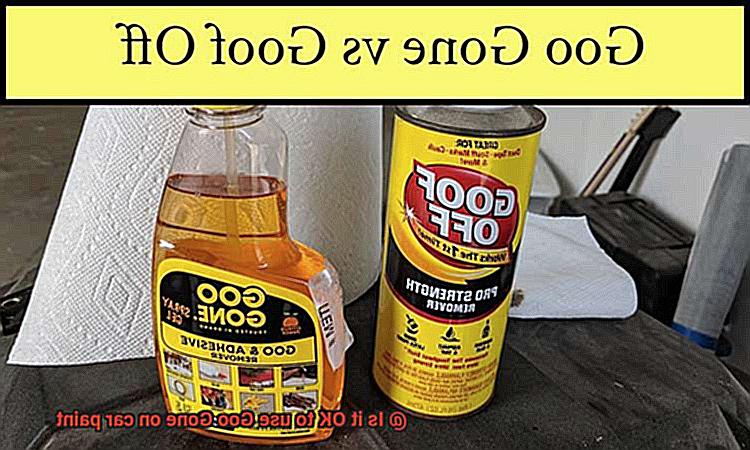
Recommended Approach:
Considering the potential risks, it is generally not recommended to use Goo Gone on car paint. Instead, opt for milder and specifically formulated automotive adhesive removers that are designed to be safe for car paint. These products are readily available and will remove sticky residue without compromising your car’s paint job.
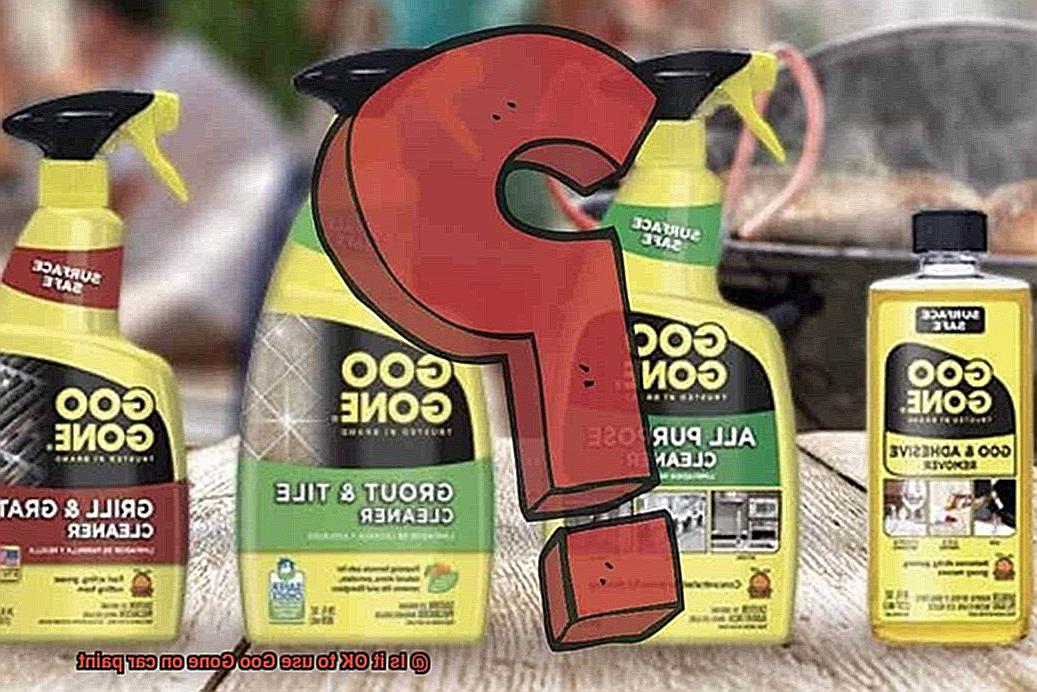
Consult Professionals:
If you find yourself needing to remove sticky residue from your car’s surface, it is best to consult with a professional detailer or seek advice from the car manufacturer. They possess the knowledge and expertise to recommend appropriate products or techniques specific to your car’s paint type. This ensures that you are taking the safest approach to preserving your car’s paint.
The Chemical Composition of Goo Gone
Imagine the frustration of a stubborn sticker residue ruining the pristine beauty of your beloved car. Enter Goo Gone, the superhero adhesive remover that promises to save the day. But before you reach for that trusty bottle, let’s take a closer look at the intricate chemical composition of Goo Gone and why it may not be the best choice for your car’s precious paint.
Unmasking the Ingredients:
Goo Gone is a formidable adhesive remover meticulously formulated to conquer sticky residues on an array of surfaces. Its chemical composition is a symphony of carefully selected ingredients working harmoniously to break down and dissolve adhesives. Let’s venture into its key components:
Petroleum Distillates:
Behold the powerhouse solvent in Goo Gone – petroleum distillates, derived from crude oil’s depths. These potent solvents are the backbone of Goo Gone’s adhesive-dissolving abilities. However, their strength comes with a caveat – they can wreak havoc on certain surfaces, including your car’s paintwork.
Citrus Oil:
Enter citrus oil, derived from zesty citrus fruits, injecting a burst of freshness into Goo Gone’s formula. Beyond its aromatic contribution, this natural wonder acts as a solvent, aiding in the breakdown of adhesives. It’s an eco-friendly alternative to harsh chemicals but falls short when it comes to protecting your car’s paint.
Surfactants:
Enhancing Goo Gone’s cleaning prowess are surfactants – secret agents that reduce liquid surface tension. These undercover chemicals ensure seamless spreading across surfaces and deep penetration into stubborn adhesive residues.
The Perils for Car Paint:
While Goo Gone showcases its magic on various surfaces like glass and plastic, caution must be exercised when applying it to your car’s precious paintwork. The petroleum distillates lurking within Goo Gone may pose potential risks, and here’s why:
The Canvas of Car Paint:
Car paints are like fingerprints – each unique and composed of distinct chemical compositions. Some may boast superior resistance to chemical damage, but it’s always better to err on the side of caution. To safeguard your car’s paint, it’s best to steer clear of Goo Gone’s direct touch.
Application Method and Potential Damage to Car Paint
Discovering sticky residue on your car’s pristine paint can be infuriating. But fear not. With the right application method, Goo Gone can become your trusty sidekick in tackling this issue. In this article, we will delve deeper into each step and provide expert insights and recommendations to ensure you can safely and effectively use Goo Gone without causing any damage to your car’s precious paintwork.
Read the Label: Unveiling the Secret Instructions
Before diving into action, take a moment to unravel the mysteries hidden within the product label. Familiarize yourself with the manufacturer’s instructions, as each adhesive remover may have specific guidelines for application and safety precautions that must be followed diligently.
Test a Small Area: A Sneak Peek into Compatibility
To dodge any unexpected surprises, it’s crucial to perform a compatibility test. Choose a small, inconspicuous area of your car’s paintwork as the testing ground. By applying a smidgen of Goo Gone onto a clean cloth or sponge, you can unveil whether this adhesive remover is a friend or foe to your car’s paint.
Apply Gently: The Art of Tender Touches
Once you’ve established that Goo Gone is indeed a trustworthy ally, it’s time to conquer the sticky residue. Embrace tender touches by gently applying a small amount of Goo Gone onto a clean cloth or sponge. Remember, excessive rubbing or scrubbing could morph your masterpiece into an unintended work of abstract art.
Allow Time for Breakdown: Patience is a Virtue
Allow Goo Gone to work its magic by giving it a few well-deserved minutes to break down the adhesive or residue. Patience is key during this waiting period; rushing may result in incomplete removal or, worse, unintended damage to your car’s paintwork.
Wipe Away Residue: Bid Farewell to Stickiness
The waiting game is over, and it’s time to bid farewell to the sticky residue. Employ a clean cloth dampened with warm water to gently wipe away the Goo Gone and residue. Ensuring the cloth is spotless prevents any residue from transferring back onto the paint. Be thorough yet gentle, for the delicate dance of removal should never be a forceful one.
Different Types of Car Paints and Their Reactions to Goo Gone
Well, fret no more. Prepare to embark on an exhilarating journey through the captivating realm of car paints and their enthralling encounters with this beloved adhesive remover. Fasten your seatbelts and brace yourselves for a vivid exploration.
Clear Coat Paint: The Ultimate Guardian
Clear coat paint emerges as the valiant superhero of car paints, donning an impermeable cape. This resilient finish serves as a protective shield for the underlying layers of paint. Fear not, for clear coat paint can effortlessly withstand the formidable power of Goo Gone. It remains steadfast in its mission to safeguard the paint from harm’s way. Nevertheless, it is prudent to test a discrete area before fully unleashing the might of Goo Gone.
Metallic Paint: Sparkle and Brilliance.
Picture yourself cruising in a car that glistens like a precious gem beneath the sun’s caress. Such is the enchantment bestowed by metallic paint. Infused with minuscule metal flakes, this transformative paint grants your vehicle an alluring, lustrous allure. Mirroring its metallic-suited counterpart, metallic paint exhibits impressive resistance against Goo Gone’s forces. It endures, undeterred by this adhesive remover’s might. Yet, tread cautiously and conduct a preliminary test to ensure harmony between Goo Gone and metallic paint.
Solid Paint: Vibrancy and Versatility
Solid paint serves as a painter’s canvas, splashed with vibrant hues and adorned with a glossy sheen. It appeals to those who crave audacious statements on their cars. Fortunately, solid paint proves forgiving when confronted by Goo Gone’s prowess. It braves this challenge, emerging unscathed and resplendent. However, even superheroes harbor weaknesses, necessitating a cautious trial on a discreet section prior to embracing Goo Gone wholeheartedly.
Matte Paint: A Delicate Rebel
Matte paint emerges as the enigmatic rebel within the realm of car paints. With its non-reflective, velvety appearance, it beckons those who yearn to stand out from the crowd. Alas. Matte paint stands as a delicate flower, vulnerable to Goo Gone’s might. Prudence dictates that this potent adhesive remover remains far from the reach of your matte-coated beauty. Opt instead for specialized matte paint cleaners or seek the guidance of professionals.
Alternatives to Using Goo Gone on Car Paint
Alternative 1: Rubbing Alcohol – The Gentle Warrior
In pursuit of a safe and cost-effective option? Look no further than rubbing alcohol, also known as isopropyl alcohol. This versatile substance can dissolve sticky residues with ease, leaving your car’s paint unscathed. Grab a clean cloth, moisten it with rubbing alcohol, and gently massage the affected area until the residue vanishes like magic.
Alternative 2: Dish Soap and Warm Water – The Delicate Duo
Sometimes, simplicity reigns supreme. Create a gentle adhesive remover by blending a few drops of dish soap with warm water. Dip a cloth or sponge into this soothing solution and lovingly caress the sticky residue away. This method is perfect for those who prefer a more tender touch.
Alternative 3: Clay Bar – The Contaminant Conqueror
For a truly thorough cleaning experience, enlist the aid of a clay bar. This pliable marvel is tailor-made to eliminate contaminants from your car’s paint. Glide the clay bar delicately over the adhesive residue, capturing it in its grip without leaving a trace of damage behind. Prepare to witness automotive alchemy.
Alternative 4: WD-40 – The Versatile Hero
Professional Advice for Removing Adhesive Residue from Car Paint
As an expert in the field, I’m here to share professional advice on how to bid farewell to that stubborn adhesive residue. From trusted techniques to alternative solutions, let’s embark on a journey to restore your car’s mesmerizing shine.
Proceed with Caution: The Patch Test
Before delving into the world of adhesive residue removal, it’s imperative to exercise caution. Conduct a patch test on a small, inconspicuous area of your car’s paint. This step ensures that any potential damage or discoloration is avoided.
Goo Gone: The Adhesive Remover Extraordinaire
Goo Gone, a renowned adhesive remover, is often hailed as the go-to choice for car paint. However, use it sparingly and adhere to the manufacturer’s instructions. Excessive application or prolonged contact can harm the paint.
Gentle Application: A Delicate Dance
Whether you choose Goo Gone or any other adhesive remover, apply a small amount onto a clean cloth. Then, with finesse, gently rub the adhesive residue in soothing circular motions. Vigorous scrubbing or excessive pressure can pave the way for unsightly scratches.
Thorough Cleansing: Leave No Trace Behind
After successfully bidding adieu to the adhesive residue, embark on a thorough cleansing mission. Employ mild soap and water to ensure every trace of the adhesive remover is obliterated.
Restore and Protect: The Final Flourish
Having vanquished the adhesive residue, it’s time to restore your car’s luster and provide it with an extra shield against future damage. Consider indulging your car in a waxing or polishing session, granting it a captivating finish.
Alternative Arsenal: Exploring Your Options
Should Goo Gone fall short of your expectations, fear not, for alternative methods and products await your discovery. Venture into the realms of rubbing alcohol, vinegar, or specialized automotive adhesive removers. Remember to choose a solution that safeguards your car’s paint and meticulously follow the instructions.
5hg0T77J0kU” >
Conclusion
To sum it up, using Goo Gone on your car paint is a risky move. Sure, this stuff works wonders when it comes to getting rid of stubborn gunk on various surfaces, but its potent solvents can wreak havoc on your car’s precious paint job. We’re talking about fading, discoloration, and even peeling paint here.
And it doesn’t stop there. The rubbing motion required to remove residue with Goo Gone? Yeah, that can create tiny abrasions on the paint, leaving you with a lackluster finish or worse, permanent damage.
Before you go reaching for any adhesive remover, take a moment to consider what kind of paint your car has. Clear coat and metallic paints tend to hold up better against the harshness of Goo Gone, while solid and matte paints are more delicate and prone to suffering the consequences.
So what’s the alternative? Well, instead of taking unnecessary risks with Goo Gone, go for automotive adhesive removers that are specifically designed to be gentle on car paint. These products are easy to find and will effectively banish sticky residue without compromising your ride’s pristine appearance.
If you’re feeling unsure about how to safely tackle sticky situations on your car’s surface, don’t hesitate to seek help from a professional detailer or consult with the manufacturer. They have the know-how and expertise to recommend suitable products or techniques tailored to your car’s specific paint type. Trust me, it’s worth taking that extra step to ensure you’re preserving your car’s beauty in the safest way possible.
When it comes down to caring for your beloved wheels, remember: caution and thorough research should always be at the forefront of your mind. Don’t let a simple mistake ruin all those hours spent waxing and polishing.

